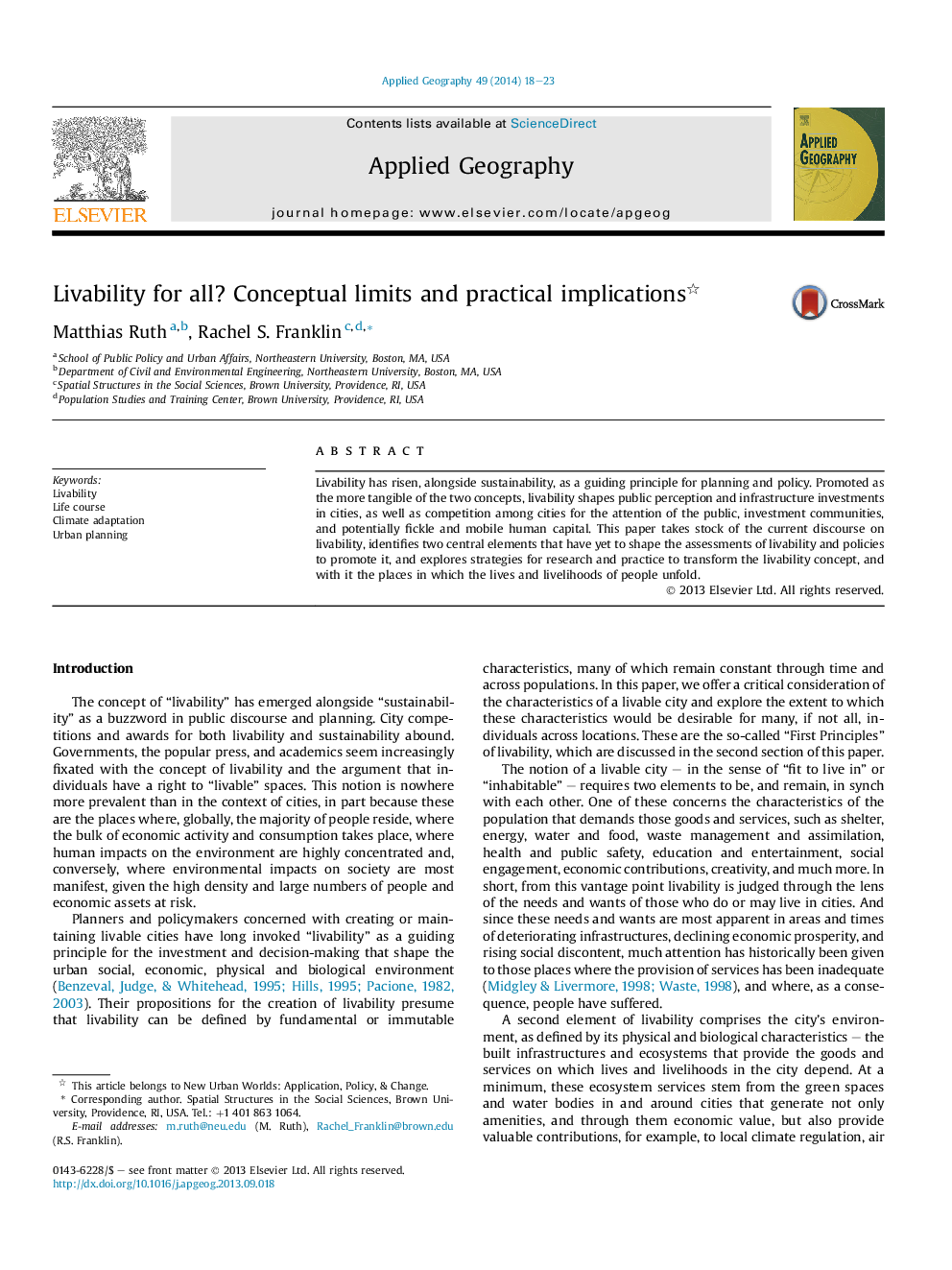| Article ID | Journal | Published Year | Pages | File Type |
|---|---|---|---|---|
| 83232 | Applied Geography | 2014 | 6 Pages |
•There is a dearth of theoretically grounded models to assist decision makers.•Urban systems must be flexible to adjust to unforeseeable future conditions.•Sustained livability benefits require “back-up systems” and other redundancies.•The effects of diversity can be positive or negative where livability is concerned.
Livability has risen, alongside sustainability, as a guiding principle for planning and policy. Promoted as the more tangible of the two concepts, livability shapes public perception and infrastructure investments in cities, as well as competition among cities for the attention of the public, investment communities, and potentially fickle and mobile human capital. This paper takes stock of the current discourse on livability, identifies two central elements that have yet to shape the assessments of livability and policies to promote it, and explores strategies for research and practice to transform the livability concept, and with it the places in which the lives and livelihoods of people unfold.
